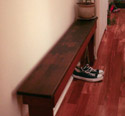Out of the great Pacific Northwest last week came the story of Jim Zumbo, a well-renown outdoorsman, wildlife biologist, and hunting evangelist, whose career has essentially come to an abrupt halt as a result of him daring to speak his mind and disapprove of the trend towards using military-style assault rifles in hunting. In a nutshell, Zumbo — who wrote his first article for Outdoor Life in 1962, has published over 1,500 articles in outdoor magazines, has authored over 20 books, and has served on a half-dozen forestry and animal society boards over his career — wrote an entry on the Outdoor Life weblog questioning the use of assault rifles in hunting and referring to the class of weapons as “‘terrorist’ rifles.” The backlash was instant and unrelenting; before the weblog post was pulled by the folks at OL, it had apparently garnered 4,000+ comments (most of which called for Zumbo’s firing, and a not-unsubstantial number of which called for much worse for him), and hundreds and hundreds of posts all over the web indicting the man’s opinions. Within a few days, Outdoor Life had fired Zumbo, his show on the Outdoor Channel had been cancelled, most of his corporate associations (like with Remington Arms) had been terminated, the NRA suspended all ties to him, and he’s more or less had to go into hiding. We’re talking about a man who has stumped for the NRA and its causes nearly a hundred times over the course of his career, and a single word in a single opinion piece has led to a hysteria that, in the gun world, appears tantamount to Watergate or Mark Foley’s diddling of Congressional pages.
This is one of the more insane reactions I think I’ve ever seen. It seems odd to me that a publication like Outdoor Life — owned by Time, Inc., one of the more staunch defenders and beneficiaries of First Amendment rights in this country — would suddenly end the career of a storied and prolific writer because he took advantage of the benefits the First Amendment grant him and uttered an opinion that riles people’s notions of what they feel their own Second Amendment protections are. There’s a valid argument to be made that, in writing his opinion on the OL-sponsored weblog, Zumbo bore some increased responsibility to OL for tailoring his opinions appropriate to their restrictions — but within a day of his posting, the magazine added a standard disclaimer to the weblog entry appropriating the views to him and him alone, and yet they still canned him a few days later.
All that being said, I doubt that this has all played out yet, and likewise, I doubt that we’ve seen the final tone this debate will take. I’d hazard a guess that there are a crapload of hunters out there who feel similarly to Zumbo, and by alienating him, organizations like the NRA are increasing the likelihood that when he gets his voice back, he’s not going to be all that friendly to them anymore. Incidents like this tend to expose the true fault lines that run through issues like gun ownership (a quick perusal of some of the more fanatical gun ownership forums even this morning demonstrates how true that is), and as this brouhaha dies down, those fault lines don’t close up.





